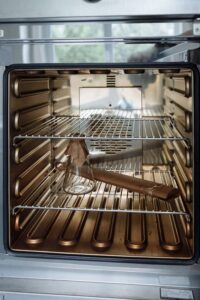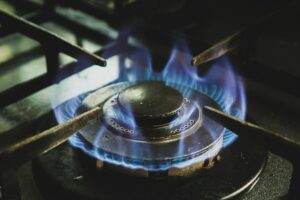Having a dishwasher that doesn’t fill enough water can be a frustrating problem. It can lead to dishes not being properly cleaned and can even cause damage to the dishwasher itself. When a dishwasher doesn’t fill with enough water, it can affect its performance and efficiency.
Key Takeaways
- Dishwasher not filling enough water can be a frustrating problem
- Proper water level is crucial for effective dishwasher cleaning
- Low water level can be caused by blockages, faulty parts, or sensor issues
- Diagnosing the problem involves checking various components of the dishwasher
- If DIY solutions don’t work, it’s best to call a professional for repair and maintenance
Understanding the importance of proper water level in dishwashers
Proper water level is crucial for the optimal performance of a dishwasher. The right amount of water is needed to dissolve detergent and create the necessary cleaning solution. If there is not enough water, the detergent may not dissolve properly, resulting in poor cleaning performance.
Low water level can also affect the rinsing process. Without enough water, dishes may not be thoroughly rinsed, leaving behind soap residue and food particles. This can lead to spots and streaks on dishes, as well as an unpleasant odor.
Common causes of low water level in dishwashers
There are several common causes of low water level in dishwashers. One possible cause is a clogged water inlet valve. The water inlet valve controls the flow of water into the dishwasher, and if it becomes clogged with debris or mineral deposits, it may not allow enough water to enter the dishwasher.
Another possible cause is a faulty float switch. The float switch is responsible for monitoring the water level in the dishwasher. If it is not functioning properly, it may not signal the dishwasher to fill with enough water.
A damaged or malfunctioning water pump can also result in low water level. The water pump is responsible for circulating the water throughout the dishwasher during the wash cycle. If it is not working properly, it may not be able to pump enough water into the dishwasher.
How to diagnose the problem of low water level in your dishwasher
To diagnose the problem of low water level in your dishwasher, you will need to perform a few simple steps. First, check the water supply line to ensure that it is not kinked or blocked. Next, inspect the water inlet valve for any signs of blockage or damage. If the water inlet valve appears to be functioning properly, you will need to examine the float switch and float assembly. Finally, inspect the water pump and motor for any signs of damage or malfunction.
Checking the water inlet valve and water supply line for blockages
To check the water inlet valve and water supply line for blockages, you will need to turn off the power to the dishwasher and shut off the water supply. Once this is done, you can remove the access panel on the front of the dishwasher to gain access to the water inlet valve. Inspect the valve for any signs of blockage or damage. If you notice any debris or mineral deposits, clean them out using a soft brush or cloth. Next, check the water supply line for any kinks or blockages. If you find any, straighten out the line or remove the blockage.
Examining the dishwasher float switch and float assembly

To examine the dishwasher float switch and float assembly, you will need to remove the bottom rack of the dishwasher and locate the float assembly. The float assembly is usually located near the front of the dishwasher, underneath the bottom rack. Inspect the float switch for any signs of damage or malfunction. If it appears to be damaged, it may need to be replaced. Additionally, check the float assembly for any debris or obstructions. Clean out any debris that you find.
Inspecting the dishwasher water pump and motor
To inspect the dishwasher water pump and motor, you will need to remove the access panel on the front of the dishwasher. Once this is done, locate the water pump and motor assembly. Inspect it for any signs of damage or malfunction. If you notice any leaks, cracks, or unusual noises, the water pump and motor may need to be replaced.
Cleaning the dishwasher spray arm and filter
To clean the dishwasher spray arm and filter, you will need to remove the bottom rack of the dishwasher. Locate the spray arm and remove it from the dishwasher. Inspect it for any clogs or blockages. If you find any, clean them out using a soft brush or cloth. Next, locate the dishwasher filter and remove it from the dishwasher. Clean it thoroughly under running water to remove any debris or food particles.
Adjusting the dishwasher water level sensor
To adjust the dishwasher water level sensor, you will need to consult the owner’s manual for your specific dishwasher model. The process may vary depending on the make and model of your dishwasher. In general, you will need to locate the water level sensor and adjust it according to the instructions provided in the manual. This may involve turning a dial or adjusting a screw.
When to call a professional for dishwasher repair and maintenance
While many dishwasher problems can be fixed by following these steps, there are some instances where it is best to call a professional for repair and maintenance. If you are unsure about how to diagnose or fix the problem, it is always best to seek professional help. Additionally, if you have tried all of these steps and are still experiencing low water level in your dishwasher, it may indicate a more serious underlying issue that requires professional attention.
In conclusion, having a dishwasher that doesn’t fill enough water can be a frustrating problem. It can affect the performance and efficiency of the dishwasher, leading to poor cleaning results and potential damage to the appliance. By understanding the importance of proper water level in dishwashers and knowing how to diagnose and fix common causes of low water level, you can ensure that your dishwasher is working at its best. If you are unsure about how to fix the problem or have tried all of the steps mentioned and are still experiencing low water level, it is best to call a professional for repair and maintenance. Don’t let a dishwasher with low water level ruin your cleaning experience – take action and get it fixed today.
If you’re experiencing issues with your dishwasher not filling enough water, it’s important to identify the problem and find a solution. In our blog post, “Common Dishwasher Problems and How to Fix Them,” we provide helpful tips and troubleshooting steps to address this specific issue. From checking the water supply valve to inspecting the float switch, our article offers valuable insights to help you resolve the problem. To learn more about identifying and solving dishwasher issues, check out our blog post here.
What Could Cause a Dishwasher to Not Fill with Enough Water?
There are several possible dishwasher not filling troubleshootings that could cause a dishwasher to not fill with enough water. These include a faulty water inlet valve, clogged water line, or a malfunctioning float switch. Checking these components can help diagnose and fix the issue. Additionally, it’s important to inspect the water supply line for any kinks or blockages that might restrict water flow. Regular maintenance can prevent common dishwasher water filling issues, ensuring that your appliance runs efficiently. If these troubleshooting steps don’t resolve the problem, it may be time to consult a professional for further assistance.



